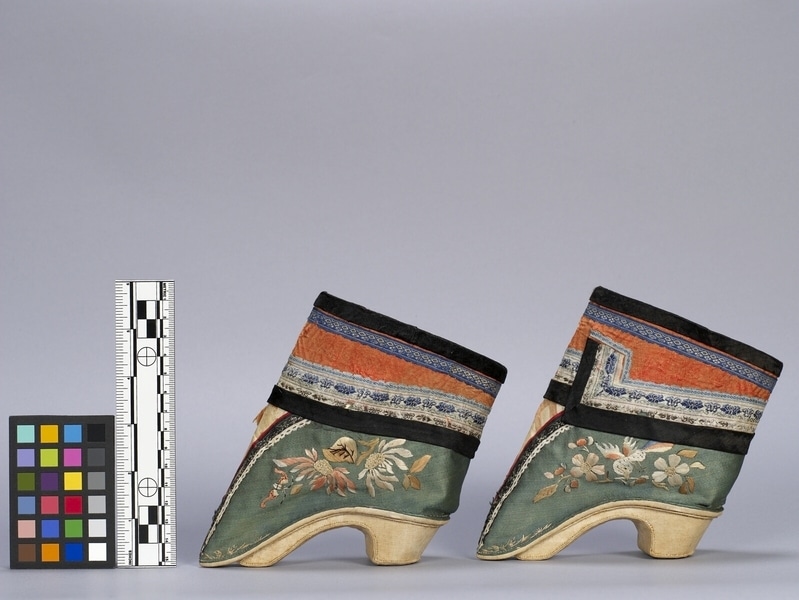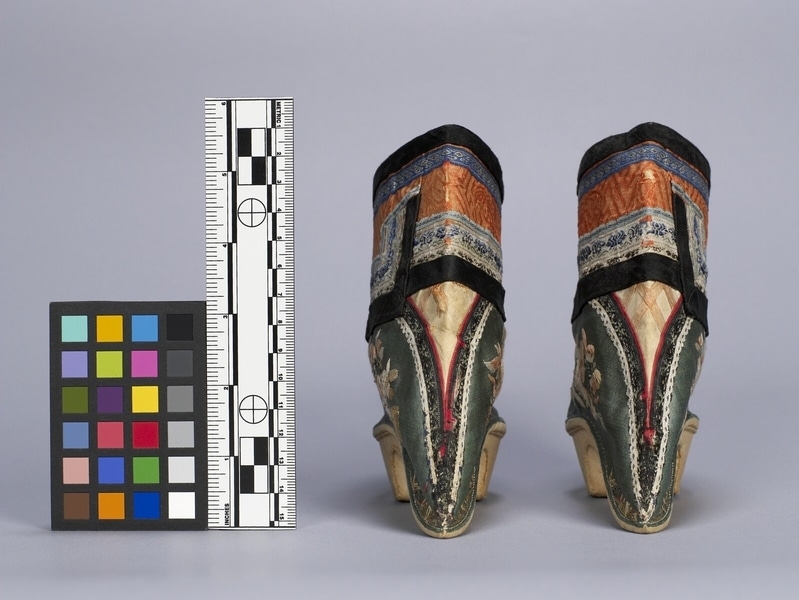Shoes Item Number: Edz996 a-b from the MOA: University of British Columbia





Description
A pair (parts a-b) of shoes for bound feet. The soles of each shoe are made of white cotton fabric, and the thick arch, and heel, in one piece, are of the same fabric over wood(?) lined with finer white fabric. The outer surface, except for the sole, is covered with silk. The lower part is made of light blue-green silk with embroidery consisting of multi-toned pink flowers, and butterflies. The upper part is made of red silk, trimmed with black silk, and multi-coloured silk braid. At the front, there is lattice pattern of pink silk. The body of the shoe has several layers of stiffened fabric.
History Of Use
Foot binding was practiced from about 1000 years ago until the early years of this century, spreading to all except the lowest classes and to most regions, with the exception of minorities, the Hakka, and Kwangtung peasants. Originally a symbol of leisure and gentry status, it was also emulated by the peasantry, despite the fact that it prevented women from doing heavy work. Bound feet kept women physically helpless and confined to their homes, and were considered erotically appealing.
Iconographic Meaning
The embroidered cash are a symbol of wealth.
Cultural Context
used by upper class women
Item History
- Made in China before 1870
- Collected during 1870
- Owned by Ronald M. Jones before February 17, 1977
- Received from Ronald M. Jones (Seller) and Unknown (Funding source) on February 17, 1977
What
- Name
- Shoes
- Identification Number
- Edz996 a-b
- Type of Item
- shoe
- Material
- silk fibre, cotton fibre and wood ?
- Manufacturing Technique
- machine woven, hand stitched and machine stitched
- Overall
- height 16.5 cm, width 6.0 cm, depth 11.8 cm
Who
- Culture
- Chinese
- Previous Owner
- Ronald M. Jones
- Received from
- Ronald M. Jones (Seller) and Unknown (Funding source)
Where
- Holding Institution
- MOA: University of British Columbia
- Made in
- China
When
- Creation Date
- before 1870
- Collection Date
- during 1870
- Ownership Date
- before February 17, 1977
- Acquisition Date
- on February 17, 1977
Other
- Item Classes
- textiles
- Condition
- good
- Current Location
- Case 83
- Accession Number
- 0355/0001 a-b